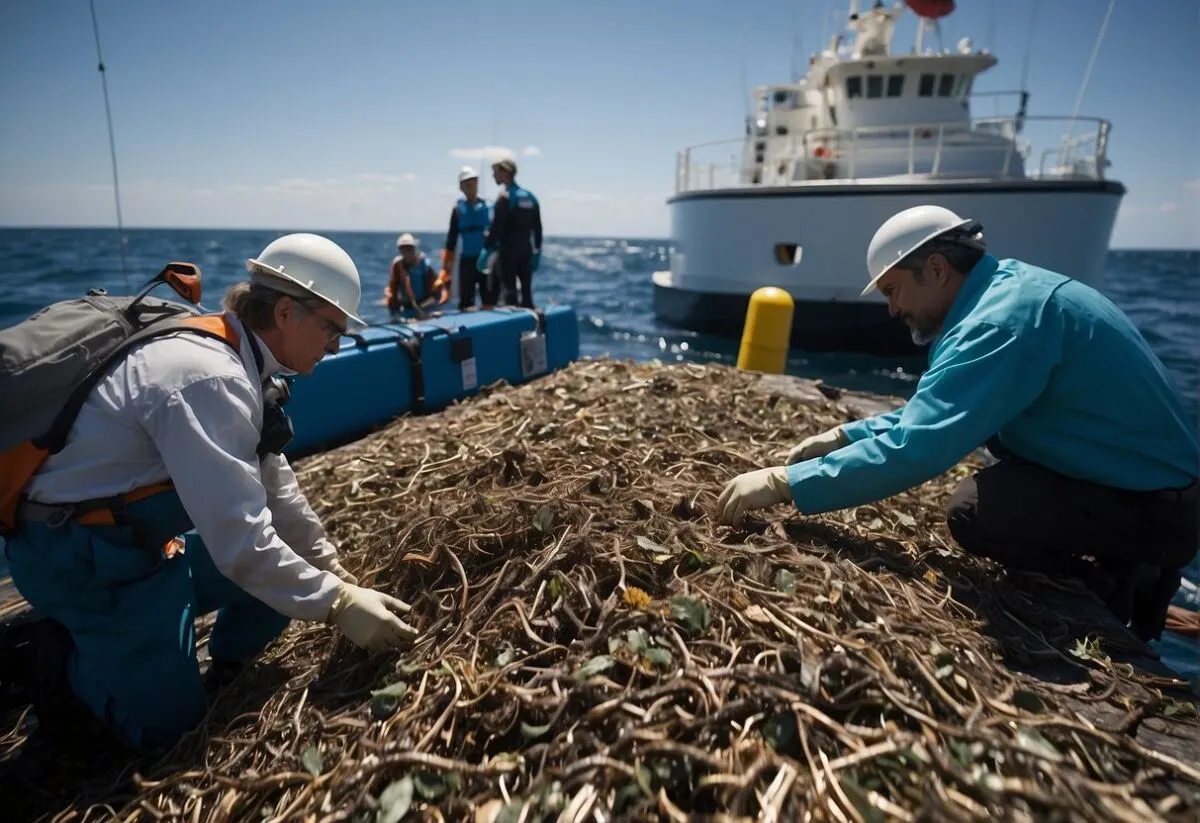Wildlife conservation efforts across the globe have paved the way for remarkable recovery stories that instill hope for the future of biodiversity. Through dedicated initiatives, species once on the brink of extinction are now witnessing a resurgence, demonstrating the potent impact of concerted human action.
The California condor, North America’s largest land bird, exemplifies this triumph. Near extinction in the late 20th century, the species has seen a dramatic recovery thanks to decisive interventions by conservation organizations.
Equally inspiring is the rebound of the iconic bald eagle, the United States national bird, which has seen its populations soar due to protective legislation and habitat restoration. The increase in wild tiger populations is another testament to global conservation success.
Where numbers were once dwindling, international commitments and strategic partnerships have led to a significant rise in tiger numbers, underscoring the effectiveness of collaborative conservation.

These stories of resilience are a beacon of hope and underscore the potential for positive change when the world unites in wildlife conservation. They are powerful examples of how strategic conservation efforts can alter the trajectory of species conservation and preserve the rich tapestry of life on Earth.
The Return of the Giant Panda

The giant panda, once a symbol of endangered species, has experienced a resurgence that can only be described as a testament to global conservation efforts. China has played a pivotal role in this shift, showcasing a commitment to preserving one of the world’s most cherished mammals.
Conservation Partnerships: Critical to this comeback story, the WWF (World Wildlife Fund) and various conservationists have formed robust partnerships focusing on habitat restoration and sustainable development. Their collective strategy for the 2015-2025 decade underscores a tailored approach that respects local communities’ needs while protecting the panda’s natural environment.
Habitat Restoration Achievements:
- Restoration of degraded habitats
- Connection of fragmented habitats
- Improvements in the quality of existing panda habitats
These concentrated efforts have yielded significant results, propelling the giant panda from its most critical conservation status. The species serves as an ambassador for the importance of habitat conservation, providing a blueprint for other conservation projects globally.
While the giant panda’s revival is a beacon of hope, it also shows the need for balanced conservation efforts that simultaneously address the requirements of other species sharing the same ecosystem.
The conservation success of the giant panda stands as a powerful example of what can be achieved through dedicated international cooperation, robust funding, and strong on-the-ground tactics to address pressing ecological challenges.
See Related: Best Conservation Posters
India’s Tiger Success Story

India has long been a bastion for the endangered Bengal tiger, and its efforts in conservation have yielded remarkable results that resonate globally. The turnaround in tiger fortunes began after stark 2006 statistics recorded only 1,411 tigers. Since then, proactive measures have led to a resurgent tiger population.
As of the most recent census in 2018, numbers have surpassed 2,967 individuals, showcasing a steady rise in population over the past decade. This success encapsulates the effectiveness of India’s wildlife policy and protection regimes within its numerous tiger reserves.
Conservation Efforts:
- Anti-poaching initiatives: Implementation of stringent anti-poaching laws and improved surveillance.
- Habitat Restoration: Rehabilitation of forested areas to expand and secure tiger habitats.
- Community Engagement: Involving local communities in conservation efforts to mitigate human-tiger conflicts.
Despite the success, managing human-animal conflict and habitat encroachment remains an ongoing task. Poaching attempts, although reduced, still pose a significant threat. However, India is a testament to the global conservation community that dedicated efforts can bring a species back from the brink.
Protected areas have been instrumental in achieving this milestone. With tigers as an umbrella species, protecting these areas also ensures the conservation of other flora and fauna, thereby maintaining the integrity of entire ecosystems.
India’s conservation strides have been a national triumph and an example to the world, highlighting how focused conservation strategies can yield positive outcomes for global biodiversity. Through collective resolve and continuous vigilance, India continues to nurture its legacy as the stronghold of the world’s wild tiger population.
See Related: The African Wildlife Conservation Fund
The Revival of the American Bald Eagle

Once teetering on the brink of extinction, the American bald eagle represents a triumphant turnaround in wildlife conservation. Habitat loss and unchecked hunting practices significantly reduced their numbers by the mid-20th century. However, their fortune began to change with the passing of the Endangered Species Act (ESA) in 1973.
Conservation Efforts
This powerful legislation provided crucial legal protection to the bald eagle and their nesting sites across the USA. A series of conservation measures, including habitat preservation and stringent hunting and pesticide use regulations, played pivotal roles in the eagles’ recovery.
Role of the ESA
The ESA’s impact on bald eagles:
- Listed as endangered, providing legal protection
- Banned the use of DDT, a pesticide linked to eggshell thinning
- Restored key habitats, ensuring safe nesting areas
Conservation strategies were implemented carefully, ensuring that public and private stakeholders contributed to the eagles’ survival.
Results
As a result, bald eagle populations soared from their once dire numbers to a robust figure, allowing the species to be delisted from the ESA in 2007. This success illustrates how concerted efforts can foster a rejuvenation of other species facing similar threats globally.
Their resurgence is a beacon of hope, demonstrating the effectiveness of concerted international conservation efforts. Today, the bald eagle stands not only as the national symbol of the USA but also as a global emblem of the potential for wildlife restoration.
See Related: David Shepherd Wildlife Foundation
Ocean Cleanup Initiatives

Ocean cleanup initiatives are vital for combating plastic pollution and protecting marine life, including fish populations and coral reefs, ensuring overall ocean health. Partnerships, like the one between
The Ocean Cleanup and Bharat Clean Rivers Foundation showcase how global collaborations can address such critical issues, particularly in India. These efforts reflect a broader commitment to maintaining the biodiversity and sustainable practices vital for the health of our oceans and fisheries.
Innovative technologies are instrumental in these endeavors. For instance, new tools and methods are being developed to prevent and efficiently remove waste from aquatic environments.
To illustrate the tangible impact of these cleanups, recent efforts by the Oceanic Society’s sponsored cleanups in locations like Cebu, Philippines, and Kwale, Kenya, have resulted in hundreds of pounds of waste being removed from these ecosystems.
Cebu, Philippines:
- Volunteers: 65
- Waste Collected: 340 lbs
- Unusual Item: Television
Kwale, Kenya:
- Volunteers: 105
- Waste Collected: 452 lbs
The Coca-Cola Company also plays a role in this narrative, acknowledging the impact beverage industries can have on pollution. Their initiatives and partnerships to recycle and reduce waste contribute to cleaner oceans.
Educational initiatives are equally critical. The UN’s Decade of Ocean Science for Sustainable Development emphasizes Ocean Literacy as a key action area, educating the public on the importance of the oceans and inspiring positive change through knowledge.
Clean oceans are the backbone of many local and global economies, supporting industries and communities. By maintaining the vitality of our oceans, these cleanup initiatives offer a beacon of hope for the future.
See Related: How Much Environmental Damage is Israel’s War on Gaza Causing
Reforestation Efforts Worldwide

Indonesia is playing a significant role in reforestation, focusing on planting pioneer tree species within the development of their new capital city. These trees rapidly establish a canopy, creating favorable conditions to regenerate diverse ecosystems. This approach is pivotal for climate resilience, addressing the urgent need to combat climate change and restore areas affected by deforestation.
Internationally, monitoring reforestation projects has become as crucial as tracking deforestation, albeit more complex. Vital metrics include assessing carbon sequestration ability and the retention of biodiversity to ensure the long-term success of restored ecosystems.
In a significant pledge at the COP26 UN Climate Change Conference, over 100 leaders vowed to end and reverse deforestation by 2030. The commitment of nearly $19.2 billion of combined public and private funds underscores the global recognition of forests’ value in climate change mitigation and ecosystem conservation.
However, the conflation of reforestation with restoration has been noted, with a differentiated focus required for nonforest ecosystems. Initiatives must adapt to various conditions, especially since not all tree-planting projects contribute equally to restoring original biodiversity and ecological balance.
| Conservation Feature | Significance |
|---|---|
| Pioneer Tree Species Planting | Accelerates canopy formation and ecosystem regeneration |
| Monitoring Ecosystem Restoration | Ensures long-term viability and biodiversity |
| International Financial Pledges | Offers substantial investment in reforestation efforts |
| Differentiation in Restoration | Tailors reforestation to suit specific ecosystem needs |
Reforestation is inherently linked with enhancing climate resilience among communities, countering the effects of climate change, and preserving global ecosystems for future generations.


